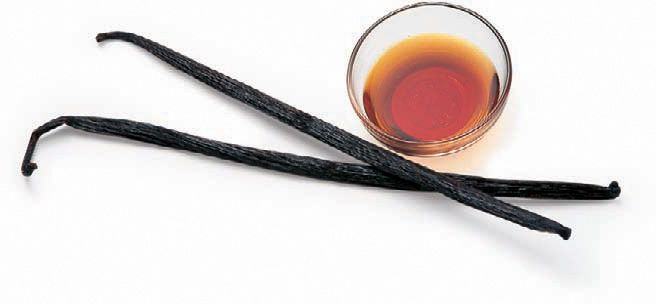Advertisement
Vanilla Beans
Appears in
By Lulu Grimes
Published 2009

True vanilla comes from the pod of a climbing orchid vine. The beans are picked when green, then left to sweat and dry in the sun, causing them to shrivel, turn deep brown and acquire a light coating of white vanillin crystals. True vanilla is expensive, partly because of the labour-intensive methods of obtaining it and partly because the flowers are hand-pollinated on the one day of the year that they open. Good-quality vanilla beans have a warm, caramel vanilla aroma and flavour, and should be soft, not hard and dry. Bury a bean in a jar of sugar and let the flavours infuse the sugar, or infuse the whole bean in hot milk and use for custards and ice cream. For extra flavour, use the tip of a knife to slice down the bean to allow some of the tiny, potently flavoured seeds to escape. Vanilla is also distilled into pure vanilla extract (or essence). Synthetic or imitation vanilla flavouring is also available and this must be labelled as such. It is cheaper than pure vanilla extract and the flavour is inferior.


